Mento's May Madness Melange: #2 - Spookin' With Smento
By Mento 1 Comments
Welcome to Part 2 of May Madness Melange, and today we're establishing the format for the rest of this month: I'll look at three games with a common theme or genre, go into detail about my time with each one and then do a big ol' compare and contrast at the end to give everyone an idea of which one they should be spending their hard-earned Steam Trading Card/Dota Hat resale money on.
Today we're looking at three first-person horror games. These are becoming increasingly popular in the Indie market, possibly due to how much Indie developers grew up appreciating games in the survival horror genre back when the big studios were still making them and wanted to take a leaf from all the Silent Hills and Fatal Frames out there by crafting their own beguiling horror narrative that operated on user interactivity. Either that, or because they felt assured that a horror game would generate a lot of sales thanks to the histrionic efforts of some shrill Swede on YouTube. Hard to say.
Anna: Extended Edition

The game: Dreampainters' Anna, a horror-themed adventure game from 2013.
The source: The Kalypso Humble Weekly Sale.
The pre-amble: Anna's set in an abandoned sawmill, to which the protagonist travels after seeing it in numerous nightmares. The protagonist believes that a woman, Anna, resides in the building somewhere and is the key to understanding his missing memories. Beyond that, the plot gets increasingly ambiguous.
The game is in first-person and features physics puzzles as well as jump scares, creepy visual tricks and other well-established horror game tropes. An obvious comparison can be made with Amnesia: The Dark Descent, but while that game emphasized exploring a huge mansion, Anna's more about solving puzzles in a smaller enclosed space. There are texts everywhere that provide hints on what sort of rituals need to be performed to progress further into the sawmill, and by finding the right items and using them in the right way the player can unlock new rooms and keep digging deeper into the player character's past, the history of the sawmill and the nature of Anna.
The playthrough: Most of the puzzles in the game involve collecting items lying around the place, finding a book, either reading the book in full (there's a lot of text in the game) or checking the protagonist's notebook for an abridged version of what the book suggests, and then working out how to make what it asks happen with the items in your inventory and the various interactive hotspots in the vicinity. Every so often and occasionally at random, the game will suddenly shift menacingly, throwing one of its many "events" at you to creep you out. As you progress further, the building stops resembling a regular dilapidated sawmill and looks more like Se7en's John Doe and Poltergeist's... the poltergeist got together to make one of those TV shows about interior decorating, as the lighting becomes an ominous red and occult iconography and blood starts appearing all over the walls. The further you progress with the game and the more you probe into its secrets, the less wholesome it all becomes. It's an effective tactic, and one that goes counter to most game progressions with its multiple endings: they get progressively more grim the longer you spend with the game and the more you discover. Last time I saw a feature like that was with Drakengard, and I don't really want to discuss how Drakengard concluded. I'm still working up the courage to buy the third one when it comes out this month.
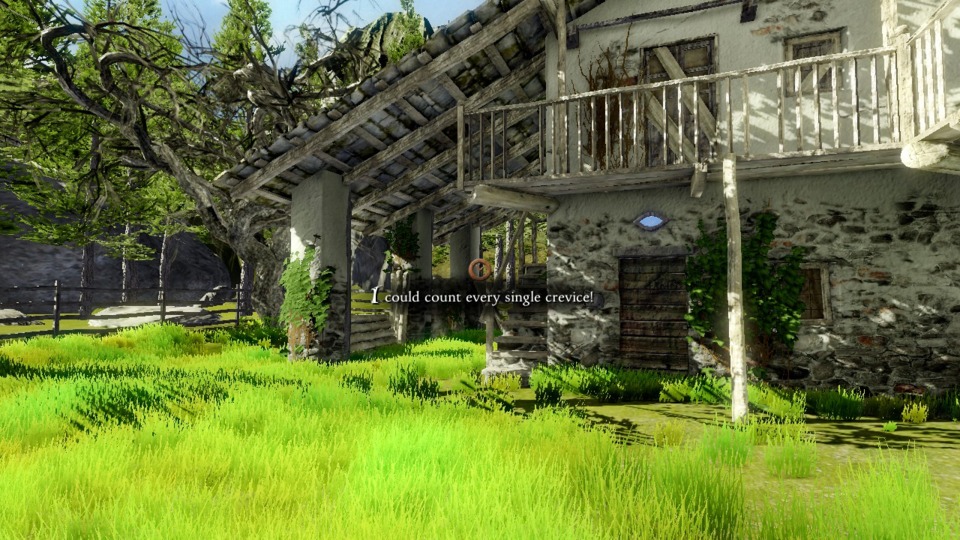
The game doesn't have health limits or any manner of combat, but it does have a sanity meter with a clever if not quite mechanically sound player interaction component. The meter drains whenever one of the game's spooky set-pieces happens and refills whenever the player solves a puzzle (again, a bit like Amnesia), but the most frequent instance of incurring a meter penalty is when the player spots one of the many girl wood (no, not the Aisha Tyler kind) mannequins who have a disturbing habit of appearing directly behind you if you stand still for too long. If the player's camera spins around or makes any sudden movements while looking at one of these mannequins, the protagonist takes a sanity hit - the idea is that such rapid motions would indicate that the player themselves has recoiled in horror, and with a touch of verisimilitude the game registers it as the in-game character freaking out in turn. Unfortunately, if you're stuck on a puzzle, you'll end up running around a lot searching for a solution or hints and end up activating this mannequin sanity hit inadvertently quite often, and once that sanity gauge empties the game cuts to a premature game over as the protagonist flees the sawmill in terror. It's a neat idea, but in practice is kind of annoying and ultimately detrimental to the game's investigative adventure game core. It doesn't help that the puzzles get progressively more obtuse as the game goes on, with previously explored rooms actually completely changing their contents due to how unrecognizably warped everything eventually becomes. At a point towards the end, you're chasing down the ingredients to about three or four simultaneous rituals with a huge area that you need to explore carefully for all the necessary items, all the while getting spooked every few minutes by those damn mannequins. It's enough to make one throw their hands up in the air in defeat and slink off to find an online guide.
Bugs - the computer kind, so don't worry entomophobics - actually somehow improve the horror aspect, which was unexpected. It's kinda rare that something as unfortunate and unintentional as a few glitches can build creepy tension more effectively than the game's actually deliberate spooky set-piece moments, some of which require a bit of exploration to find thus making their implementation somewhat questionable. Without getting into too much detail lest I start spoiling parts, there are mannequins (both male and female) that apparently have a configurable model with joints and the like due to how frequently you'll encounter them standing in different poses. They'll actually go so far as to shift their postures while you're standing near them, provided your gaze is temporarily elsewhere - they'll never budge an inch while you're looking directly at them. That is, except for when you enter an area where mannequins are in view, in which case you see them all briefly animate from a neutral position into the ones they're supposed to be stuck in. Seeing that happen for the first time out of the corner of my eye was one of the biggest scares in my playthrough. Another weird glitch is how certain sound effects would accidentally play while the game was loading between area transitions, and these noises were usually both terrifying and inexplicable, like animalistic screams or an ugly foley of a bone snapping. But then they'd suddenly cut off and the area would finish loading as normal. It all added a (probably unintentional) level of eeriness. Maybe the coders spotted these issues during playtesting and just kept them in, after noting how scary they were. Stranger things have happened at C++.
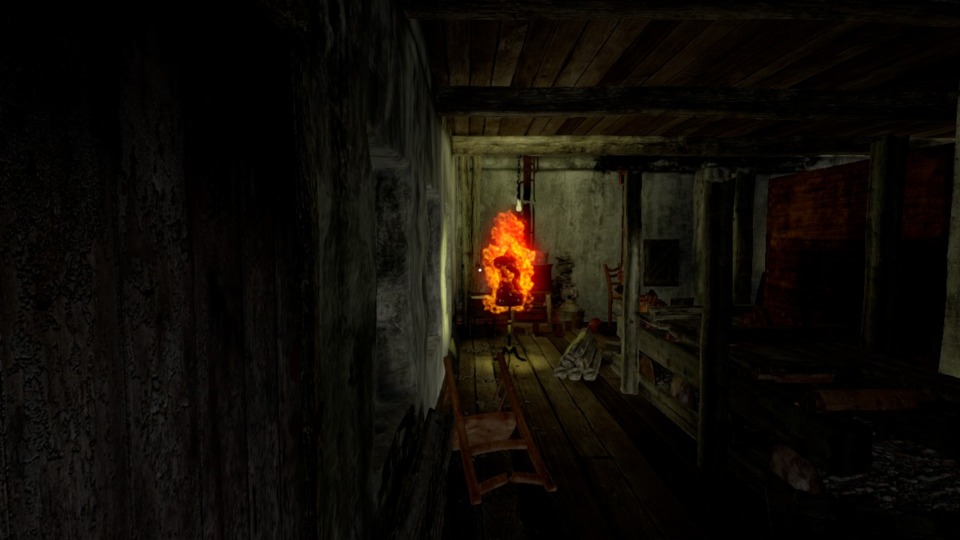
Anna's not too bad, though only in the context of a horror game. As an adventure game, it's far too obtuse and difficult, with too many instances of "how the heck was I supposed to figure that out?" and even more instances of "there was [item] there? I didn't find that. Could've sworn I passed by that bookcase around seven or eight times." The game also has an optional "intuition" aspect where the player can acquire and then merge together various clues they've discovered to deduce elements of the plot - at no point does the game explain how this feature works or why it's there, however, leaving it as one of those many things you're supposed to just "know" if you intend to get the true ending. Though the game's quite manageable initially - there's a few neat puzzles before you can even enter the house, and the entire ground floor is at least limited enough in places to look to easily figure out its puzzles - it's when you get to the attic level with all its weird elements and then subsequently discovering the ground floor has changed and somehow been refilled with unfamiliar oddities that it all starts getting overwhelming. The bizarre imagery and dark ambient lighting is excellent for setting the mood, but not so excellent when it's obfuscating what you're supposed to be searching for.
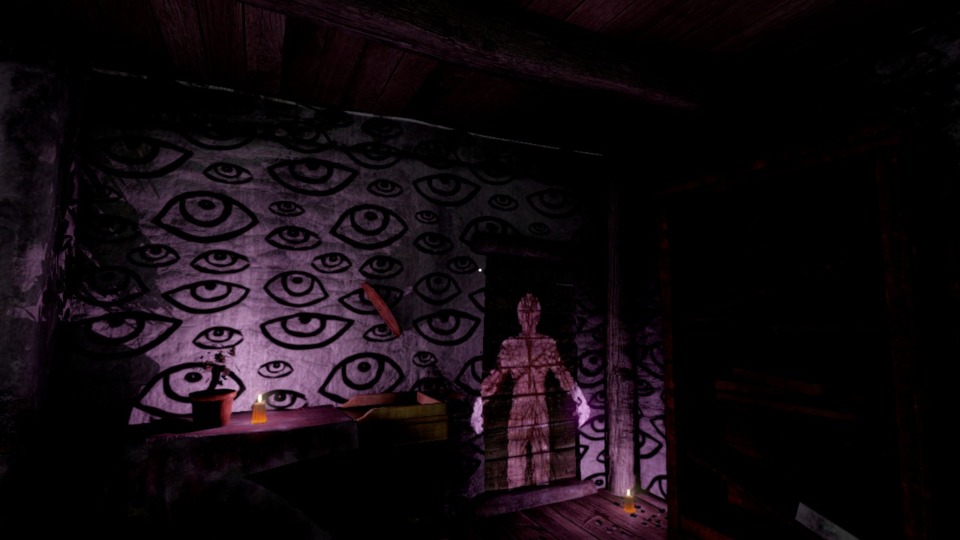
The verdict: I've beaten Anna- wait, that didn't sound too good. I've reached the ending of Anna (mildly better phrasing?) so I won't be returning to it. It has some interesting ideas, and is definitely quite spooky if not necessarily always in the way it intends to be, but as an adventure game its issues are legion.
Serena
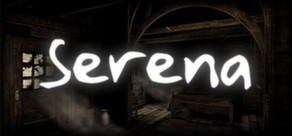
The game: Senscape's Serena. A brief, one-scene adventure game with dramatic and psychological horror elements.
The source: It's free on Steam.
The pre-amble: Serena is about a man sitting alone in a rustic cabin, pining for a woman named Serena. Who is Serena? What relation does she have to this unnamed protagonist? The picture on the desk is blurred, symbolically suggesting that the man has been waiting so long that he cannot even remember her face. By walking around the cabin, looking at items that hold all sorts of memories of their time together, the man is able to remember Serena and the time they shared. As more flashbacks are recalled, a story slowly forms in the present day and the game ends on a twist.
The playthrough: Serena's a hard game to discuss both because it's so brief and because of how focused it is on its narrative arc and the tricks it plays on the player. There's very little in the way of overt gameplay, as you literally walk around a small cabin clicking on things and listening to voiceovers of a man talking about a woman named Serena. The game's an exercise in creating an interactive narrative that's far more weighted towards the "narrative" part of that equation.
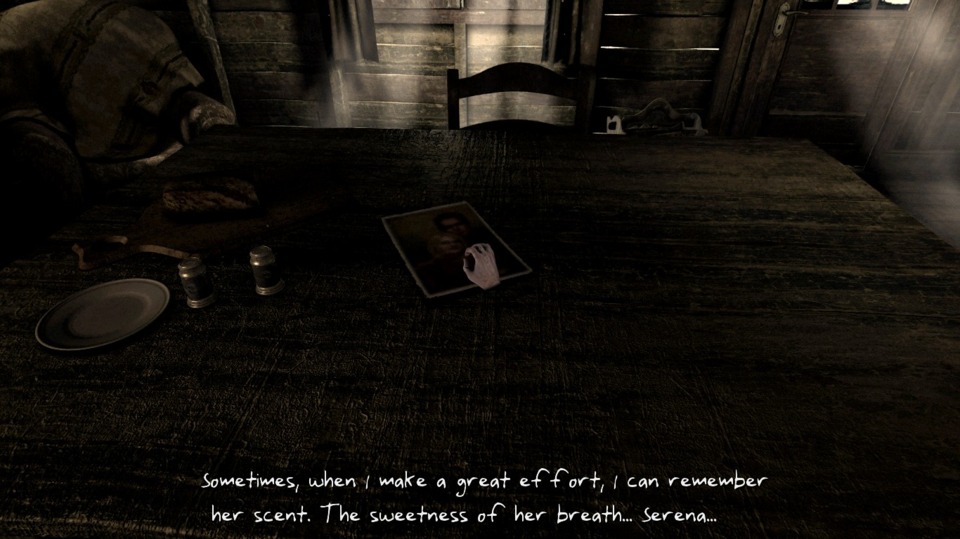
That's not to be too dismissive of Serena, though. It's easy to deride this type of low-key exploratory adventure game as "walking simulator"s and "not-a-game"s, but it's really an evolution of what some first-person adventure games have been doing since Myst: engaging an audience of book readers who write off (as it were) video games as noisy wastes of time just as quickly and as fallaciously as the hardcore gaming crowd write off barely interactive adventure games like these as far too quiet wastes of time. What we have here is a bridge between a short story novella and a video game, and as time goes on Indie developers will discover new ways of tweaking this format to allow for some truly incredible stories that can only be told with a protagonist controlled by the person experiencing the story.
Another feather in Serena's cap is its excellent writing. Though the game is short in length, it's packed with descriptive prose and some moderately good voice acting. While it can be a bit purple at times, it's clear that the lion's share of the developers' efforts went into its script. The cabin, too, is impressively detailed, if a little drab. Its drabness is partly by design, however: for the first few minutes of Serena, it seems like a very muted, humdrum drama filled with unnecessary pathos, but it's when the psychological horror elements start creeping in that it becomes more effective at what it's trying to do. However, its greatest trait, from a purely pragmatic standpoint at least, is that the game is entirely free on Steam. You could all go and download and play it right now if you so choose. It's a masterful little thing that you could beat over a lunch break.
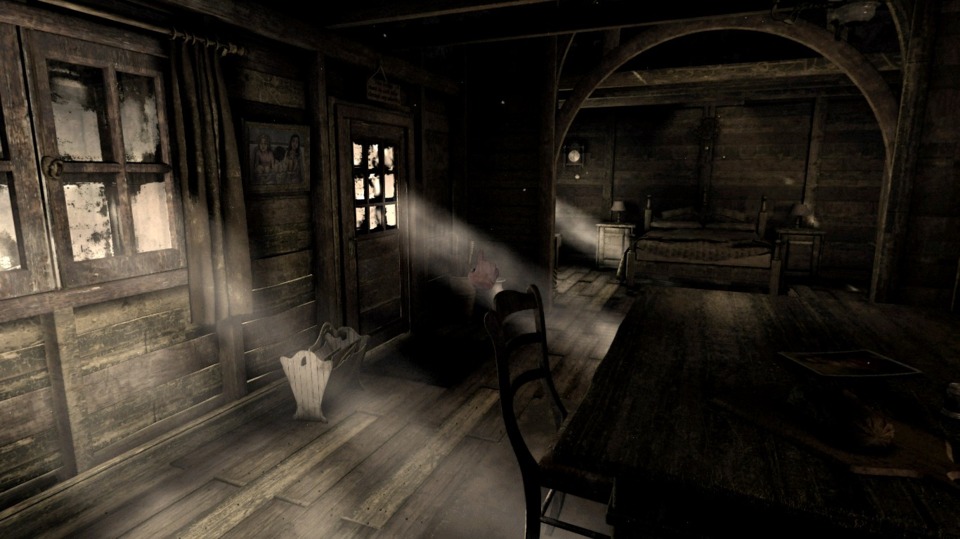
The verdict: Suffice it to say I've seen Serena to its conclusion and can put it away. Not bad for a free game.
Master Reboot
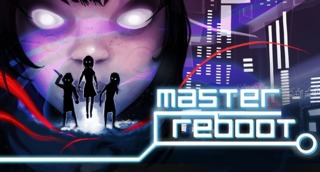
The game: Wales Interactive's Master Reboot is, surprise surprise, another first-person horror game with a creepy female antagonist.
The source: Groupees' Clash of the World: UK bundle, from their regional Clash of the World series. Gotta support the local side.
The pre-amble: The game's specifically about a Matrix-like computer world that is able to store the "souls" of dead people by transferring various memories and personality traits into something called a Soul Cloud. Soul Clouds can be visited by living people who wish to spend time with their deceased loved ones, but only for a set duration: after which they die and become part of the Soul Cloud themselves. An unnamed female protagonist finds herself trapped in a Soul Cloud created by the memories of a woman named Madison Jones, the very person who created Soul Cloud technology. Much of the game is spent wandering around reliving various moments of her life, with the player attempting to decipher who the protagonist is, witnessing events in the lives of Madison and her closest friends and discovering the identity of a spooky little girl with glowing eyes who refuses to leave the player alone.
The playthrough: As with the two other games featured today, Master Reboot is all about solving a grand mystery and running around doing puzzles to get closer to that goal, all the while nefarious and eerie forces conspire to stop you, or at least make you jump out of your seat occasionally. Master Reboot is paradoxically a very experimental game and a very generic one: it's experimental because each memory "node" features a different method of completion and a different style of gameplay. While many of them drop you in a small area and ask that you solve that area's inventory puzzles, there's a few sequences where you might be dodging traffic in a fast-paced arcade-y section reminiscent of the Atari 2600 game Night Driver, using stealth to hide from antagonistic security programs, searching for clues in the dark with nothing but a flashlight, leaping across first-person platforming sequences (oh joy...) and other offbeat instances that generally only pertain to the memory node you're in, after which you'll probably be doing something entirely different. Unfortunately, and this is where the "generic" part comes in, very little of the gameplay is particularly compelling, and there's a few sequences that are outright terrible due to some very amateur game design (perhaps my biggest pet peeve related to the realm of video games, after the grammatically unsound "Super NES").
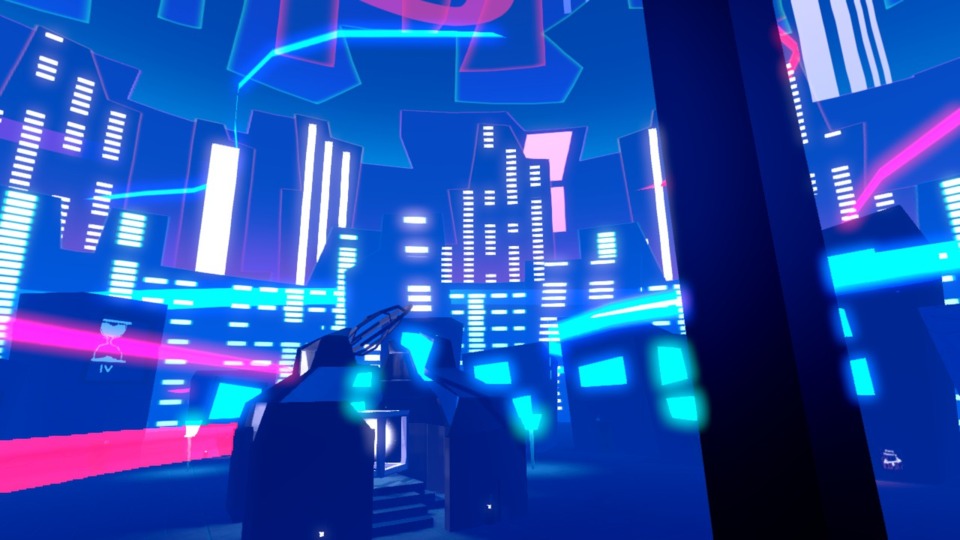
For instance, there's a sequence in an airplane where the player must avoid being seen by a constantly patrolling antagonist: the only way to do this is to hide down one of the aisles which isn't currently lit up by the overhead lamps. However, the actual lighting during this entire section is completely even, with the center lit up and the sides all uniformly dark - the only way you'd be able to tell which overhead lamps are lit is if you actually looked up and saw that the texture was that of a dark lightbulb instead of a lit one. This was almost impossible to intuit, and I got caught and killed so many times while skulking in what felt like pitch darkness squeezed right up next the plane's windows. I tried not moving the camera in case the enemy responded to motion; I tried switching aisle sides depending on which direction the antagonist was walking just in case she patrolled closer to one side; I tried crouching and not crouching and not looking in her direction in case she felt my gaze somehow. She would also spot me from halfway down the plane compartment occasionally as I was walking around, then running directly to my location no matter where I hid. All the while, I had to scour the rows looking for three golden tickets (who's flying this plane, Willy Wonka?) before the door would open and let me continue, and getting caught at any point reset the search. Following this is a tense sequence in an air duct where you're supposed to run for the last leg (you don't realise this until the enemy catches you a few times, nor was it clear (or even physically possible, if we're being technical) that you can sprint while crouching) and then a long run down a narrow walkway to the end point with tumbling pillars taking out parts of the walkway which required some very precise jumps at just the right moments, despite the fact that said walkway was consistently too poorly lit to see clearly which parts of it had collapsed.
The developers had the temerity to award an achievement to anyone who did all of the above without getting caught or dying once. Almost as if to highlight their own incompetence, though maybe now I'm just being needlessly petty.
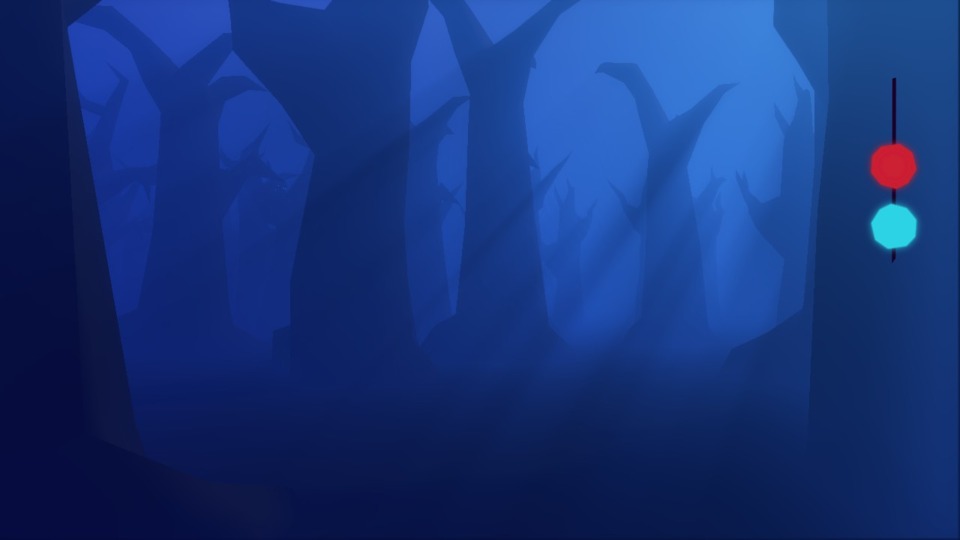
The in-game art is striking; an effective adaptation of that cuboid sort of "we're in a computer, howdy howdy howdy" aesthetic. Everything's suitably blocky and the lighting effects are some of the best I've seen in an Indie game, especially in a the game's few forested areas as is the case with the above screenshot. However, the art created for the cutscenes and various paintings in the game is kind of terrible, excepting the striking "virus" artwork that make up one of the two collectible sidequests in the game. The other collectible series - a bunch of neon blue rubber ducks - provide a lot of documents and hints that are fairly instrumental for understanding the context behind the game's frequent cutscenes and piecing together the larger plot. The story's not too bad overall, and kept me guessing throughout (I incorrectly deduced the protagonist's identity, and only had it figured out fairly close to when the game just flat out reveals it for the sake of all the slower children in the class).
But man oh man, do I feel I need to vent some more about how bad this game could get at times. Not all the time, mind, just sometimes. In a way, that's even more aggravating because Master Reboot has a lot of great ideas and a pretty neat aesthetic, but it just poops the bed one too many times for anyone's liking. If you were a team of Indie developers, would you make the final boss of your tense cyberpunk adventure horror game a series of tough first-person jumping puzzles that needed to be performed within a very strict time limit? Does that sound like a good idea to anyone who's ever touched a game development program? Or has played a video game? I don't mean to sound so harsh, but it's like garnishing a fine if unremarkable cut of steak with a sprig of "oh why the fuck even". I've... I've never been good at food analogies.
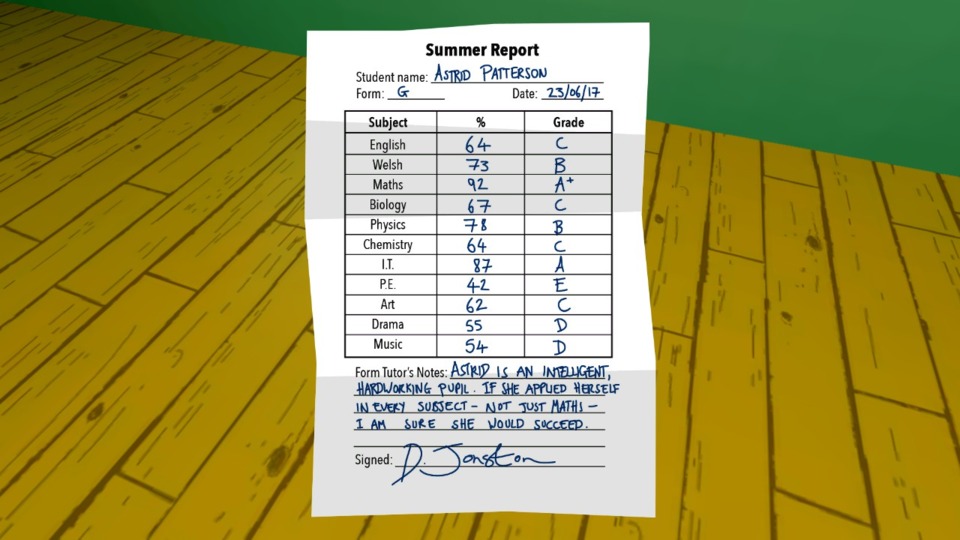
The verdict: I've beaten Master Reboot (though it certainly didn't make a compelling case for wanting to do so towards the end), so I won't be returning to the Soul Cloud anytime soon.
The Moment of Truth
So which of these three games did I prefer? Well, let's at first stretch this out a bit longer and employ the well-worn cop-out method with some individual awards:
- Scariest Game: Anna, probably. It managed to get me a few times, and at points I was kind of despairing that I couldn't solve a puzzle because it meant something was going to jump out at me sooner or later. Master Reboot piled on the unease early and often, but you kind of get used to that cute little AI after too long. One can only become so terrified of a little child, glowing eyes or no.
- Most Competent Game: That would be Serena, for as short as it was. Looked great, sounded fine, nice little self-contained story and ended on a fun headscratcher of a note.
- Most Interesting Game: Master Reboot. Anna certainly goes to some dark and intriguing places, but for a game so packed with lore and so filled with weird moments it gets a little too abstruse for its own good. Serena's simply too straightforward a game, though it does have an interesting approach to storytelling. Master Reboot is never a dull ride though, and even if you hate, hate, hate a certain section, the chances are the next one will be utterly different and more tolerable. Perhaps even enjoyable.
Overall Best Game: Odd to say this about a game you can beat in less than thirty minutes, but I'd have to give it to Serena. At no point in its short run did it make me want to detach the monitor and hurl it across the room after being presented with some manner of obnoxious bullshit. To all you horror game devs out there: Fear. Fear is the emotion you want to instill in your players, not anger or revulsion. Protipz.
